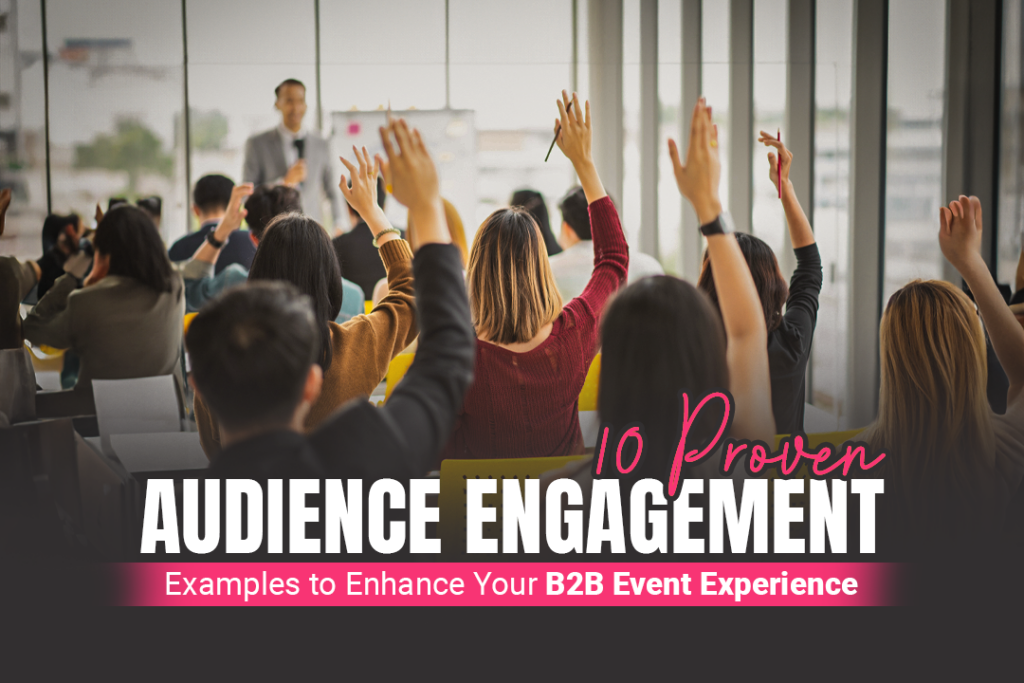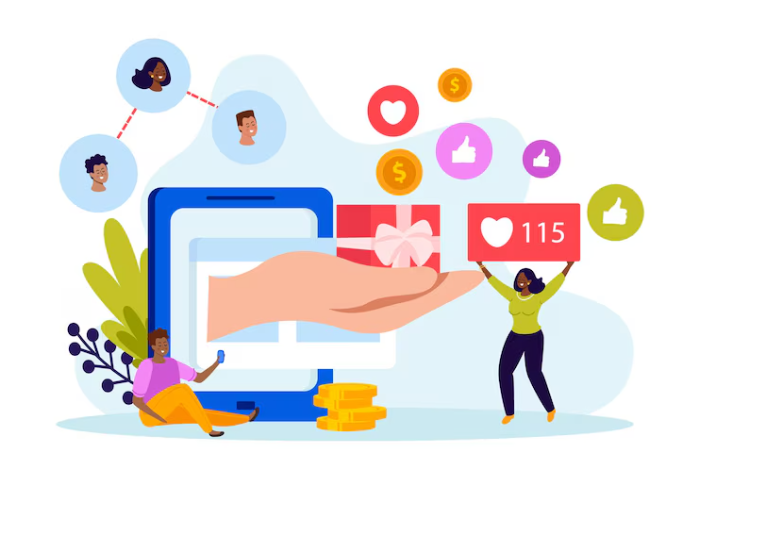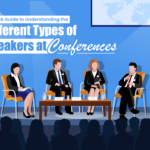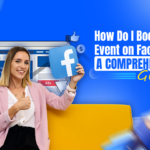
Imagine an event space where everyone actively participates in every activity, attentively listens to the speakers, admires the intricate décor details, and, most importantly, is highly involved in the event. Achieving this takes months of planning, strategizing, budgeting, sponsor hunting, and more. While event planners go about organizing everything to the T, the critical determiner of any event’s success lies in the audience engagement activities.
Audience engagement examples can be conducting quizzes, brand activation games, ice-breakers, recreational installations, and much more. Every audience engagement activity adds to the experiential layer of the event. These audience engagement examples keep even the most technical events light and easy-going.
So, what is audience engagement? Is it just planning random activities, or does it need deep strategizing? Read on to find out.
What is Audience Engagement?
Audience engagement is the attention and interaction levels of the attendees at an event. It is their level of involvement with the activities at an event. No one wants to scroll through their phones while an event progresses randomly. Event organizers want attendees to have a good experience and share the same on their social media accounts to build the brand value of the event further.
Why is Audience Engagement Important?
Audience engagement is the soul of an event, whether online, offline, or hybrid. Without proper engagement, attendees will either zone out or drop out of the event if it is virtual or walk off from an event venue if it is offline. Brands associated with the event will also need to create an impact on the attendees, and to do this, they have to indulge their audience in different engagement activities.
Ensuring audience participation in activities will ensure they stay longer at an event. This is why event organizers focus on creating immersive experiences for their attendees. Take a look at the video given below. Guests at this event were shocked by the use of projection mapping at the event venue.
Audience Engagement Examples
Engagement activities can vary depending on the kindness and budget of the event. To understand this better, let’s examine a few examples of audience engagement.
1. Interactive Polls
Polls are an easy way to engage the audience, primarily if the event is held online. They help event organizers instantly gauge their audience’s perceptions and plan things for them accordingly. In an offline setting, interactive polls are displayed on the event app, which attendees use to register, check in, and find like-minded professionals to connect with. To know more about event apps, read our blog on 20 Event Networking Apps to Lookout for in 2024.

2. Workshops
B2B events are seldom complete without an educational upgrade. Most people come to these events primarily to interact with their peers and to understand the latest trends in their respective fields. Workshops and training add to the value of an event experience. Attendees don’t just listen to keynote speakers and leave; they also get to hone their skills and further their professional goals.
3. Networking Opportunities
Some event planners pour their genius into organizing an event, and the results mesmerize attendees and leave an indelible mark on their minds. The recent Fintech Meetup held in Las Vegas was one event where attendees were given a chance to interact with subject-matter experts directly. They could have one-on-one sessions with them. The event planners ensured maximum opportunity for networking and engagement. Arranging networking opportunities at online events can seem like a challenge. However, the right strategy can ace this aspect during event planning. To learn how to create networking opportunities online, refer to our blog on How to Create Engaging Virtual Networking Events that Boost Business.
4. Social Media Engagement
5. Graphic Recording
The quality of content can make or break an event. Using the power of imagery and visualization can be impactful in effectively engaging the audience. Graphic recording is the process of translating concepts, discussions, and presentations into engaging and memorable visuals. This process makes information consumption much more exciting and ensures high audience engagement. This technique uses storytelling and visual imagery to create a digital display at the event venue.
6. VR/AR Experiences
The world of virtual and augmented reality has enticed the minds of many people across the globe. Event planners use this potent technology to get people to have memorable experiences at events. Brands use this technology to transport their target audience into a different space to experience their products and services. In B2B events, event organizers use this technology to add to the recreational and educational value of the event.
Look at the video to understand how VR can take your next B2B event to the next level.
7. Q & A Sessions
Conferences can get information-heavy if too many back-to-back sessions are lined up. Arranging Q & A sessions with experts will give the audience the breather they need and allow them to interact with the keynote speaker or subject-matter expert. Many event reviews highlight the increased satisfaction levels of attendees who got a chance to interact with the speaker. Many of them reported having learned new things through the questions they got to ask the speakers at the event. To learn more about conducting a practical and effective Q&A session for increased audience engagement, read our blog, 15 Tips That Guarantee A Productive Q&A Session.
8. Gamified Challenges
Gamifying an event can amp up the excitement. To gamify an event, one needs to set a definitive goal, choose a suitable gaming app or incorporate gaming features in the event app itself, promote the game on social media and the event app, and communicate the scores to the attendees. There are many ways to gamify, some of them are by conducting social media walls, online quizzes, live leaderboard on the event app and much more.
9. Likes and Comments
Some events encourage attendees to post examples of audience engagement and activities on social media, and the posts with the most likes and comments win prizes. This kind of community marketing ensures sufficient buzz for the event and allows newer attendees to attend the event in the forthcoming year.

10. Reviews and mentions
Once the event is over, ask the attendees to review it on a suitable event review platform. Ask them to be honest and elaborate to understand their experience and make the necessary improvements next year. Event planners can also ask sponsors and prominent keynote speakers to discuss the event on their social media pages.
Strategies for Audience Engagement
Audience engagement is one of the most crucial elements of an event, and ensuring it is done right requires strategic thinking, research, and planning. Some of the strategies to look into for coming up with practical audience engagement examples are as follows:
1. Understand Your Target Audience
For an event centered on software developers, you don’t want to plan activities that can be highly physically exhausting. The recreational activities for a group of people from the tech field could be an engaging AR/VR activation, a famous band performance, or a gaming zone. One can plan suitable audience engagement activities depending on the nature and age group of potential event attendees.
2. Make Use of an Event App
Using an event app simplifies everything. The app can send announcements, promotions, check-ins, and event schedules. Attendees can even find like-minded professionals to interact with through an event networking app. Further, if there are gaming elements, then declaring winners and maintaining scores can be done on the app. To know more about these event apps, read our blog, 7 Best Conference Apps: The Must-Have Tools for Event Attendees.
3. Create an Event Design to Support Engagement
As an event planner, one needs to ensure maximum interaction between all event stakeholders. The event design should allow breakout spaces, snacking booths, activity booths, and much more to achieve this. An intelligent event design floor will ensure maximum audience engagement.
Key Takeaway
Audience engagement is one of the most critical metrics for an event’s success. This guide can be useful for an amateur event planner or for someone who simply needs to understand how to get their audience to interact. When the target audience is fully engaged, one does not have to worry about getting them to come back for the event next year. If you wish to read more blogs on attendee experiences or other event-related topics, visit Eventible.




Comments are closed.